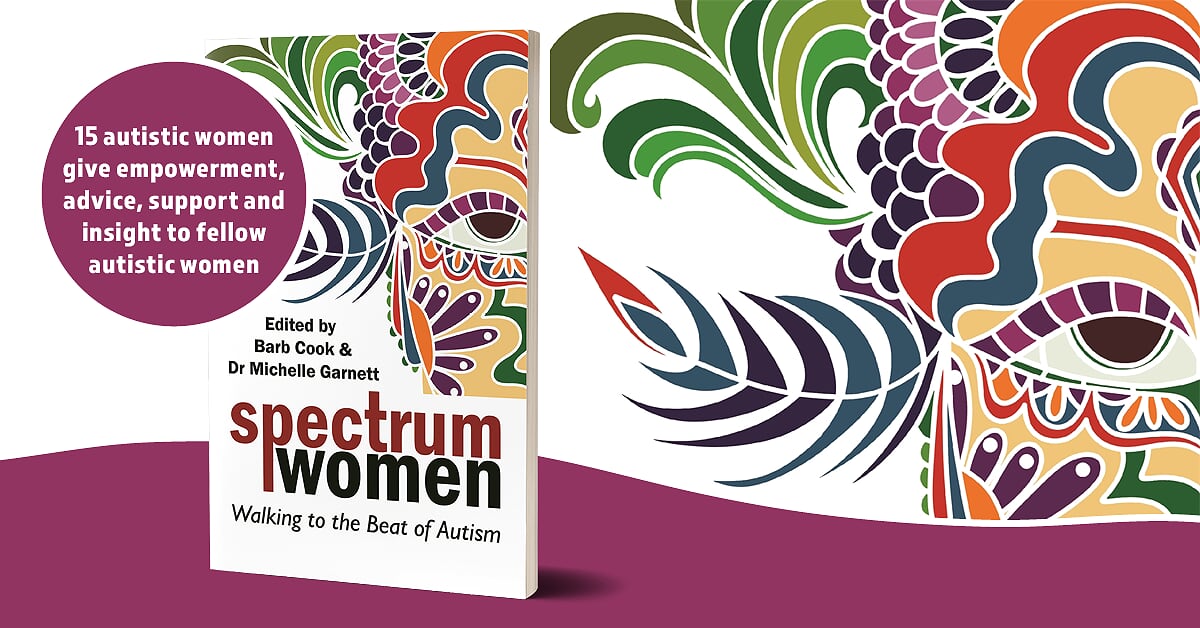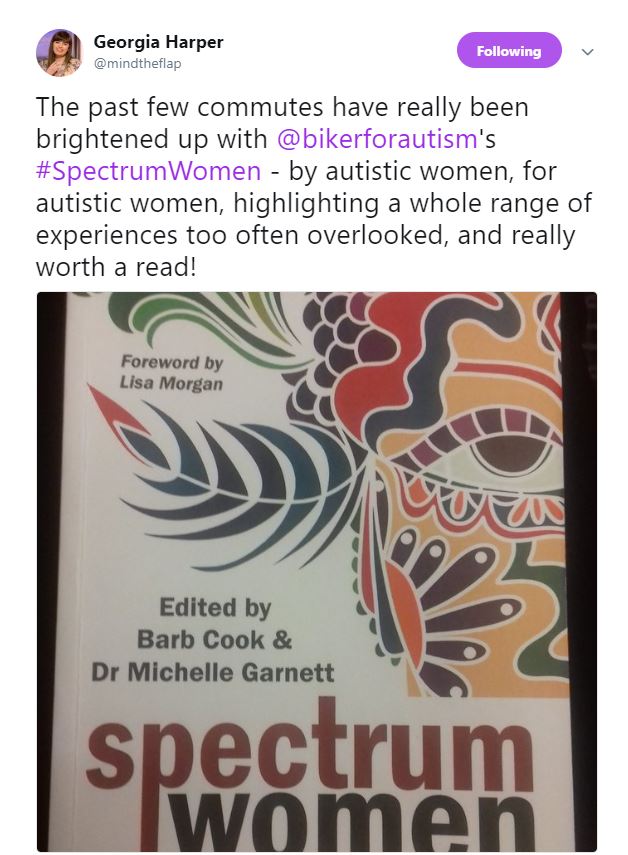New book Spectrum Women: Walking to the Beat of Autism has been written by autistic women, for autistic women. Barb Cook and 14 other autistic women describe life from a female autistic perspective, and present empowering, helpful and supportive insights from their personal experience for fellow autistic women. It’s a fascinating insight and a loving lifeline. Here, Barb Cook introduces the book and tells readers what to expect from it.
Autistic Pride. This is where it all started one fateful evening in June, last year. I (Barb Cook) could be precise on date and time, but will let it slide this time, just to coerce you a little into reading some more. I mean, prefaces aren’t usually the most exciting part of the book, but how this book evolved most certainly was for us. Us—the women of this book.
The book had its humble beginnings rooted in a conversation by the writers’ team of Spectrum Women Magazine. Autistic Pride Day was fast approaching and it was suggested by Jeanette (Purkis)—with prompting from Mr. Kitty’s tapping paw—that we should write a collaboration of stories on what Autistic Pride meant to us. It was halfway through this idea-flinging chat that, for some reason, the idea popped into my head that we should all write a book together. Hell, we do have a lot to offer, and we are all on the autism spectrum, plus we have experience—years and decades of experience—sitting within us that needed to be shared.
“You know, it did give me a thought, Renata (Jurkévythz), that we should all write a book together, maybe called Spectrum Women, each giving our personal insights. Like a book that is empowerment and mentoring to fellow autistic women?” Those, my exact words, midway through our discussion, had set the wheels in motion—on a train, down a hill, without any brakes…
Within hours a proposal was whisked away to Jessica of Jessica Kingsley Publishers—you might have noticed the imprint on the book (bit of a giveaway)—about how much the women and identifying women of the autism spectrum needed a candid, honest, and open‑hearted book written by those who “get” them, live a life like them, and want to share with them that they don’t need to navigate this life feeling alone.
We expanded the fold to include autistic women who were not just exclusive to the Spectrum Women Magazine writers’ team. The number of ideas was immense and topics became tailored into chapters to cover what we felt were an essential start to this mission. Now, keeping you on that word “mission”—reminiscent of a Bond movie—M (Maura Campbell) became my left-hand (I’m left‑handed) side-kick, the woman behind the woman, my sanity, my sounding board, my second pair of eyes, my friend with a sense of humor so dark that you needed a torch, the person who helped me make it all the way to the end. Without M, I don’t think I could have pulled this all together as brilliantly as we did. (This was not a paid advertisement.)
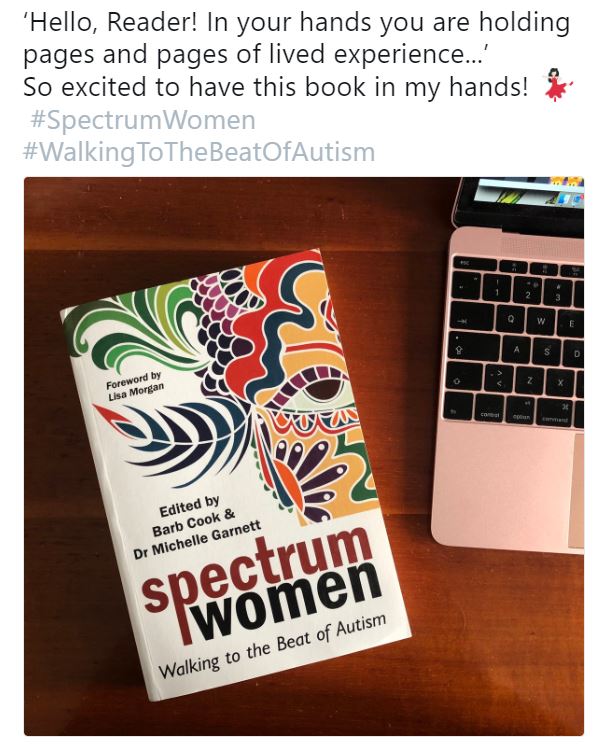 There are a lot of considerations to be taken into account when pulling a book like this together, and I am sure there will be parts that some of you may not agree with, and that is fine. We all have our insights and personal views which make us different; we embrace that. Keeping this in mind, we tried to encompass a wide diversity of thought, terminology, and writing styles used, while embracing our own personal choices.
There are a lot of considerations to be taken into account when pulling a book like this together, and I am sure there will be parts that some of you may not agree with, and that is fine. We all have our insights and personal views which make us different; we embrace that. Keeping this in mind, we tried to encompass a wide diversity of thought, terminology, and writing styles used, while embracing our own personal choices.
As this book caters for a global audience while being mindful of how identification can impact both the individual and the community who views them, we have decided on encompassing some of the following terminology:
- Identity-first language. Identity-first language has been mostly used as this is the preferred method for people identifying as being on the autism spectrum.
- General identification. Person/woman/girl/those on the spectrum. “With autism” has been used in context academically and historically.
- Autism spectrum disorder (ASD). ASD has been used instead of autism spectrum condition (ASC) for academic purposes. This is not a reflection of our personal choice in identification.
- Asperger syndrome, Asperger’s, and the personal identifying term of aspie. We recognize that Asperger syndrome was removed from the current Diagnostic and Statistical Manual of Mental Disorders (DSM-5) and was brought together under the Autism Spectrum Disorder classification. At time of printing of this book, the International Classification of Diseases (ICD-10) still formally recognizes Asperger syndrome as a diagnosis. We have included these terms to encompass those who were/are diagnosed with Asperger syndrome and in a historical sense for academia.
- High and low functioning. We agreed that the terminology of high and low functioning is an outdated and segregating description of people on the autism spectrum.
- Neurotypical (NT) and non-autistic have been used interchangeably to identify persons not on the autism spectrum.
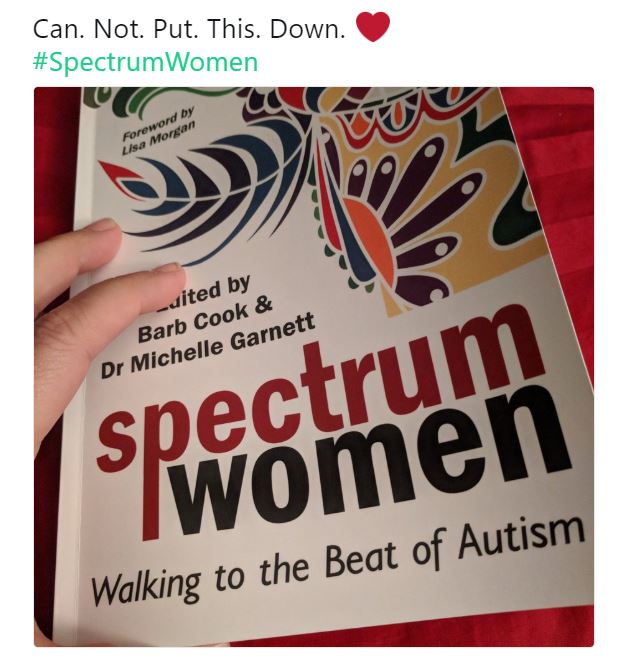 We each have our own unique way in which we identify, write, and view the world. Even though we could have enforced one particular way, a similar style for all, it wouldn’t have been a true representation of our voices, our very own and unique voices. The academic side of this book was something we wanted to embrace alongside our personal accounts. Even though the women of this book are the “experts,” we needed to ensure that the health professionals and academic community embraced what we had to offer from our personal experience and insights. Dr. Michelle Garnett complements each chapter throughout this book, giving her own views from clinical experience and research around women and girls on the autism spectrum. Dr. Garnett’s unique gift of over 20 years’ experience from working in the field of ASDs, alongside Professor Tony Attwood, shines through with each chapter she provides commentary on, with sincere and genuine compassion. Dr. Garnett brings forth to the reader the value and worth that each and every female on the autism spectrum has to offer while providing advice and demonstrated strategies in creating a more fulfilling life.
We each have our own unique way in which we identify, write, and view the world. Even though we could have enforced one particular way, a similar style for all, it wouldn’t have been a true representation of our voices, our very own and unique voices. The academic side of this book was something we wanted to embrace alongside our personal accounts. Even though the women of this book are the “experts,” we needed to ensure that the health professionals and academic community embraced what we had to offer from our personal experience and insights. Dr. Michelle Garnett complements each chapter throughout this book, giving her own views from clinical experience and research around women and girls on the autism spectrum. Dr. Garnett’s unique gift of over 20 years’ experience from working in the field of ASDs, alongside Professor Tony Attwood, shines through with each chapter she provides commentary on, with sincere and genuine compassion. Dr. Garnett brings forth to the reader the value and worth that each and every female on the autism spectrum has to offer while providing advice and demonstrated strategies in creating a more fulfilling life.
The information and personal journeys within this book are from our own unique perception and experience of the world around us, each of us living in different circumstances, making no two stories alike. But we share a common theme—to give you the reader a glimpse into each of our lives—and I am sure you will all feel a connection, whether it is with all of us or just one or two. Even the smallest amount of information, wisdom or insight that can set you on a different path of personal happiness certainly makes this project all worthwhile.
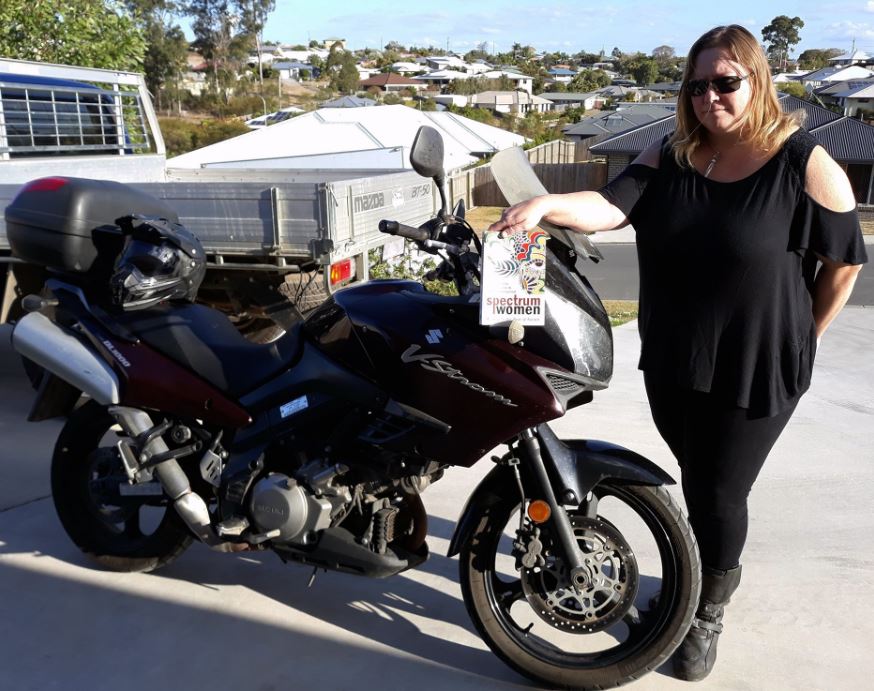
We are Spectrum Women and we are here for each other to mentor, validate, support, and share with you that your life has purpose, has meaning, has value. Within the arms of Spectrum Women, take back your power, the power to be unashamedly and uniquely you.
– Barb Cook
Find Spectrum Women HERE.
If you would like to read more articles like this and get the latest news and offers on our books about autism, why not join our mailing list? We can send information by email or post as you prefer. You may also be interested in liking our Autism, Asperger’s and related conditions Facebook page.
